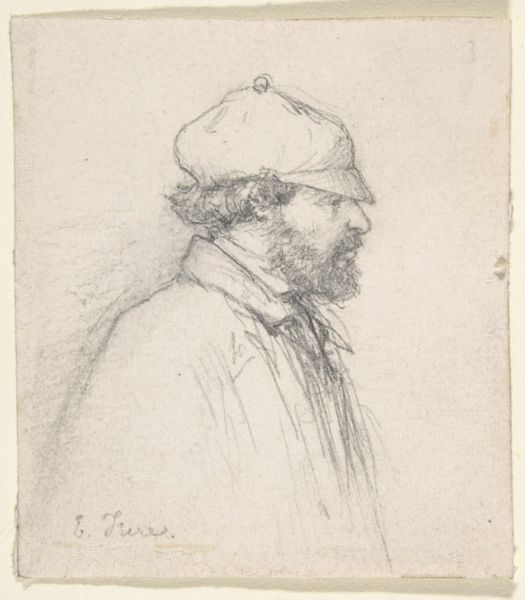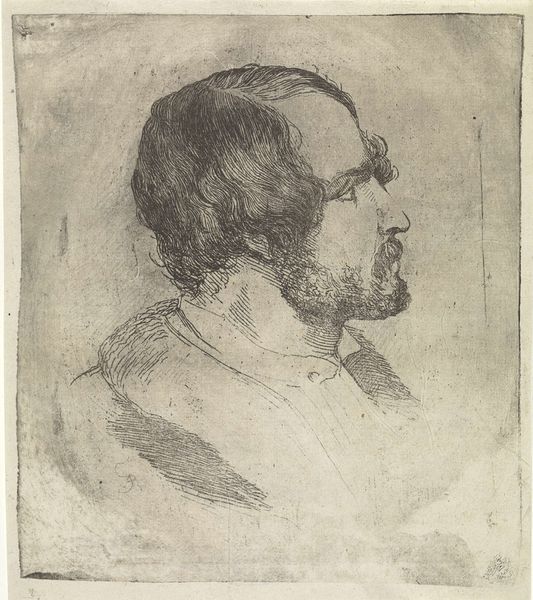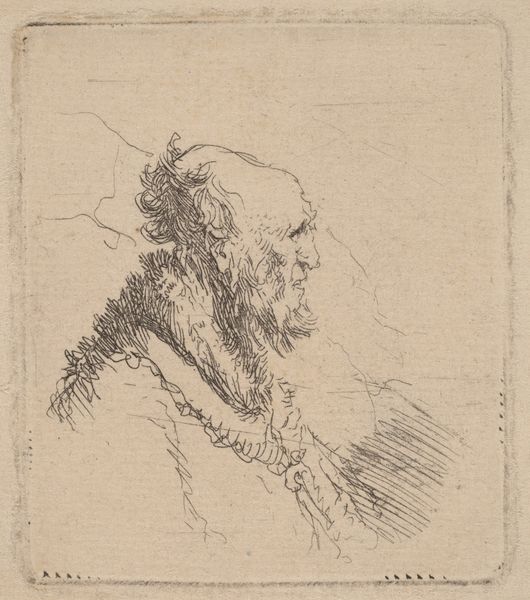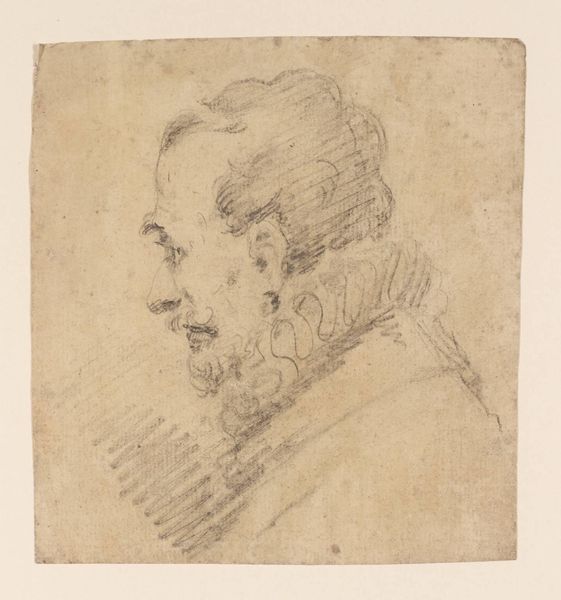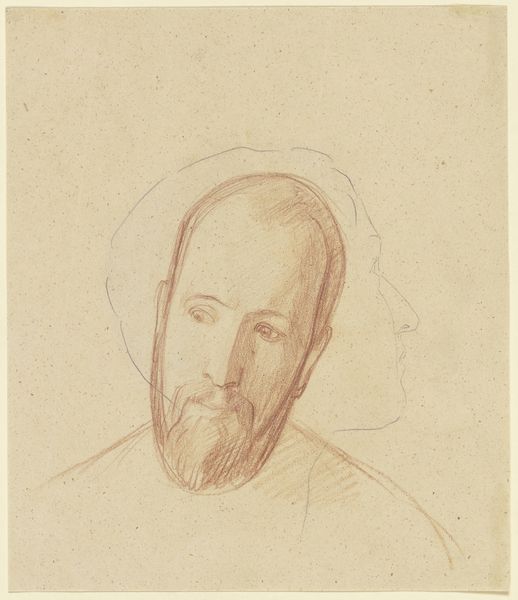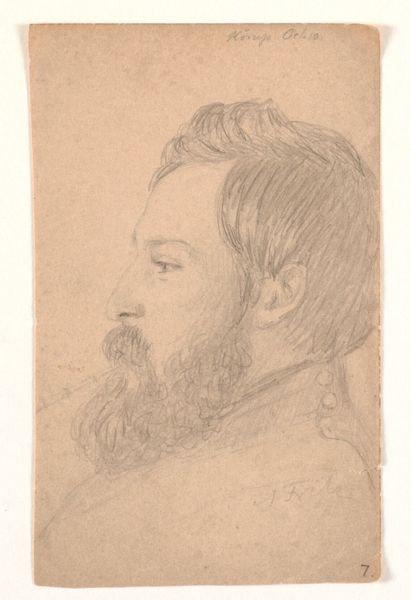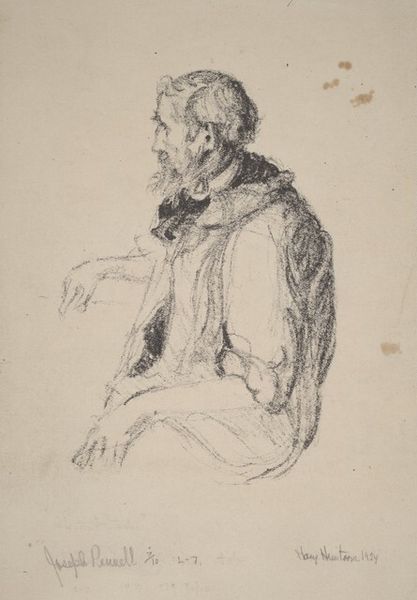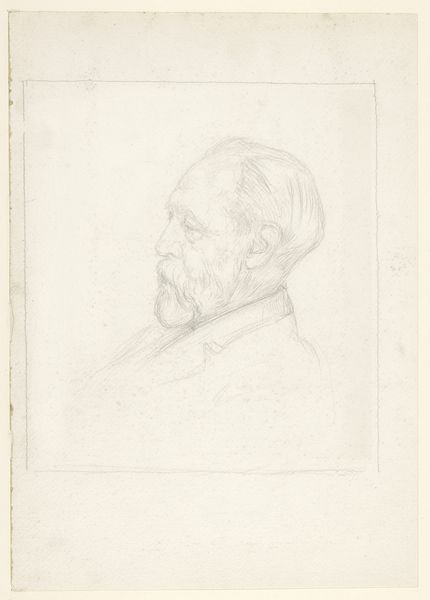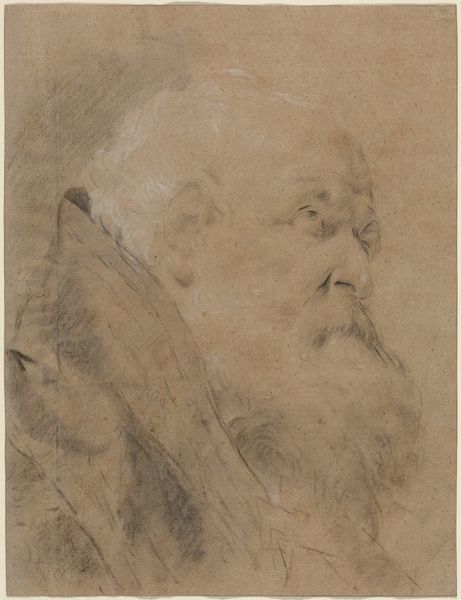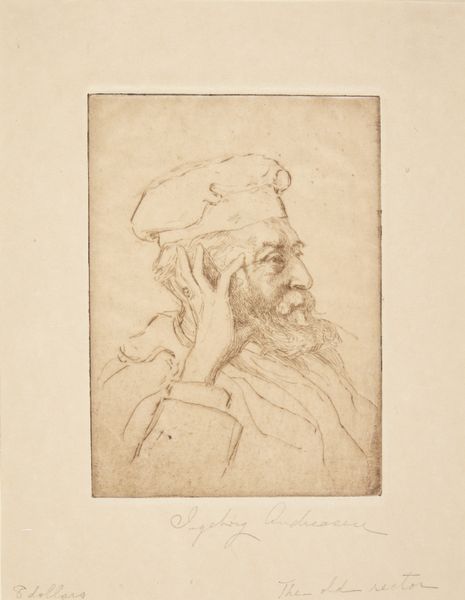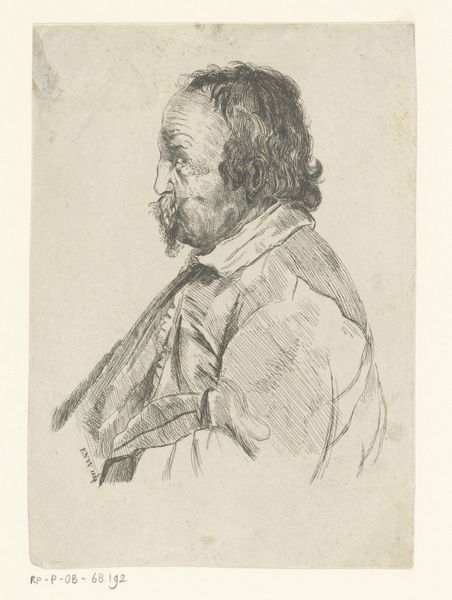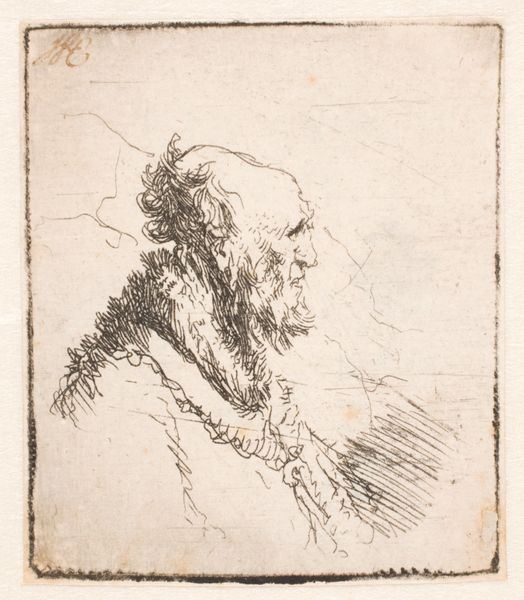
drawing, paper, pencil, graphite
#
portrait
#
pencil drawn
#
drawing
#
amateur sketch
#
toned paper
#
facial expression drawing
#
light pencil work
#
16_19th-century
#
pencil sketch
#
paper
#
portrait reference
#
german
#
pencil drawing
#
pencil
#
graphite
#
portrait drawing
#
pencil work
Copyright: Public Domain
Otto Scholderer rendered this quick sketch of a bespectacled man in 1859. The glasses and forked beard immediately strike us. What could these symbols mean? Think back to the Renaissance portraits of scholars and clergy; the beard symbolized wisdom and status. The eyeglasses, though a more recent invention, similarly signified learning and intellectualism. Now, consider how these motifs evolve. In later centuries, the beard takes on connotations of nonconformity, seen in portraits of artists or revolutionaries. Even the spectacles, initially a mark of erudition, appear in caricatures as signs of pedantry or detachment. The man’s stern profile evokes a sense of detached observation. One cannot ignore the inherent psychological tension that arises from such a composition: the knowing gaze versus our scrutiny as viewers, a dynamic that engages our subconscious. The symbols of the beard and glasses have undergone continuous transformation, proving that cultural memory operates not as a linear progression but as a cyclical resurgence, forever shifting and adapting.
Comments
No comments
Be the first to comment and join the conversation on the ultimate creative platform.
